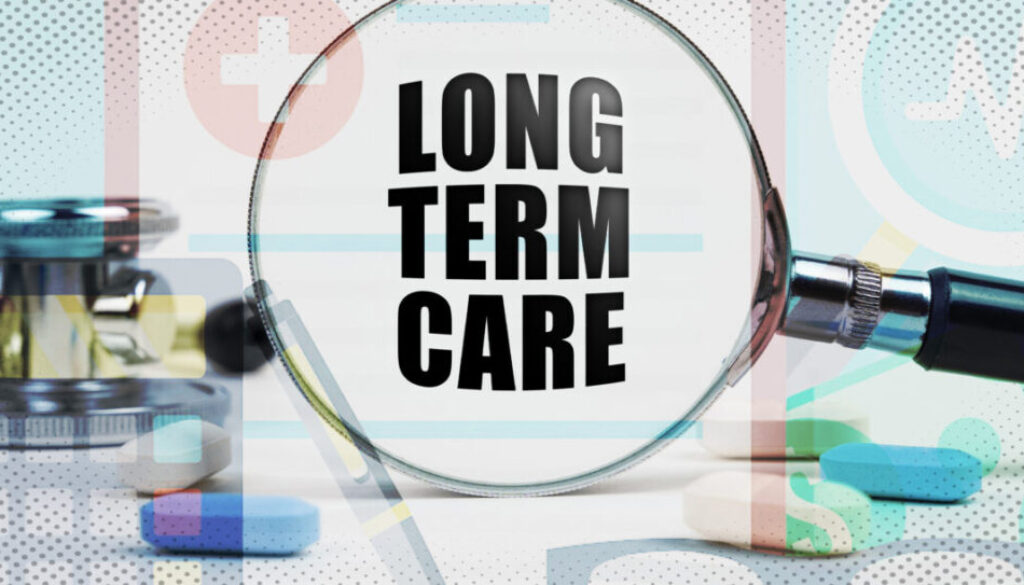Study finds long-term care coverage rare, costs high
The U.S population is rapidly aging at a time when its health care costs are the highest per capita in the world and private long-term care insurance barely exists. Only 15% of the elderly have such private insurance, and 12% of the cost of nursing home care is financed by private insurance, leaving the government or private sources to meet the ever escalating costs of long term care through Medicare and Medicaid, according to a recently authored white paper posted at the National Bureau of Economic Research.
“Those with private insurance are wealthier and have higher income than those without, but they do not appear to be in significantly worse health,” wrote the paper’s authors Jonathan Gruber and Kathleen M. McGarry. “This pattern arises from two offsetting forms of selection in the market. Those purchasing private insurance include both those who expect to use more care than average (adverse selection) and those who are particularly risk averse – the latter population is healthier on average, and thus “positively selected.’”
Gruber is considered the architect of Massachusetts’ universal health insurance program, which was the model for the Affordable Care Act, or Obamacare. McGarry is a researcher and economist at Stony Brook University, specializing in acute health care expenses and long-term end of life care expenses.
Research paper could wield major influence
Their paper, “Long Term Care in the United States,” is a chapter from an upcoming book on the global issue of long-term care that will be published by the University of Chicago Press. It could become a major influence for policymakers and a credible source of information for agents, advisors, insurers and others dedicated to working with the issue.
The lack of a strong private insurance program for long-term care can be blamed on many factors, the authors said, including a misunderstanding of Medicare coverage, suspicions regarding whether insurance companies will agree to pay for covered care if it is needed, the solvency of such companies, the high cost of policies, and the risk of future premium increases.
“Over time there has been considerable consolidation in the industry as many insurance providers have dropped out of the market and benefits from private plans often fall short of full insurance with a limited amount per day, a limited number of days/years, and little inflation protection,” the paper said.
The government has tried to encourage development of a private market through tax incentives but they have done little to change the outlook. High costs and high risks are the major factors preventing wider offerings of long-term care insurance, and the policies that do exist sometimes are wanting.
“The fundamental problem is very high load – these products just aren’t a very good deal relative to the underlying spending risk,” said Gruber, Department Chair and Ford Professor of Economics at the Massachusetts Institute of Technology.
Quality of nursing homes lacking
Along with costs and coverage concerns, the current quality of the nation’s nursing home industry is lacking. In 2016, nearly 45%of facilities were cited as deficient in infection control, 40% were lacking in food sanitation, 34% in the general quality of care, and 25% cited for the unnecessary use of drugs.
Nevertheless, expenditures on long-term care comprise a major share of total health care spending in the United States,” the paper found. In 2019, total spending for the 1.1 million nursing home residents aged 65+ was approximately $142 billion. Spending on formal health home care is 60% as large, despite there being more than three-times as many users.
Medicare is by far the largest source of financing of home care, paying for almost half of the total costs of formal home care, while Medicaid covers about 30%. Individuals shoulder only a relatively small fraction of total costs at 10%. However, much of the care covered by Medicare is short-term and associated with an acute event.
The researchers found that worldwide the share of gross domestic product devoted to long-term care ranges from 0.9%, in Spain, to 4%, in the Netherlands. In the U.S. it is 1.3% of GDP, an amount larger than share of agriculture or auto making, the researchers said.
While Washington State has implemented its public Washington Cares long-term care insurance benefit plan to help citizens with long-term care costs, a number of other states are considering a similar approach.
“To anyone with experience arranging care for an elderly family member, the dramatic costs of such care comes as no surprise,” the researchers concluded. “The median cost of a year in a private nursing home room in the United States is over $108,000, and a year of formal home care can easily exceed $30,000 at just a total of four hours of care per day. While individuals bear much of this cost through out-of-pocket spending, the largest private cost is through the informal provision of home care for elderly relatives. And combining the two, we estimate national expenses on long-term care for the elderly in 2018 of $382 billion.”
And the costs and difficulties are likely to increase in the coming years as the population continues to age, the authors said.
“Not only is the number of elderly individuals growing rapidly but the greatest rate of increase is among the oldest old, ages at which care is typically the most intensive,” they wrote. “While the demand for long-term care is increasing, the population of individuals able to provide that care is decreasing in relative terms due to lower fertility and increased labor force participation among women.”
Dealing with these issues on not just a national, but on a worldwide level, is paramount, the authors said.
“There is much to be learned by comparing the long-term care infrastructures across countries, and future advances in medical science and in technology provide hope for improvements in the long-term care landscape,” the researcher said. “While the situation in the United States provides evidence on how private insurance systems might be structured and more recently, in understanding how non-medical forms of assistance might be used to reduce the reliance on institutional spending, the United States in turn can learn from other nations how a national public insurance system might best be employed and the advantages and pitfalls associated with such a mechanism.”
Doug Bailey is a journalist and freelance writer who lives outside of Boston. He can be reached at doug.bailey@innfeedback.com.
© Entire contents copyright 2023 by InsuranceNewsNet.com Inc. All rights reserved. No part of this article may be reprinted without the expressed written consent from InsuranceNewsNet.com.
The post Study finds long-term care coverage rare, costs high appeared first on Insurance News | InsuranceNewsNet.




